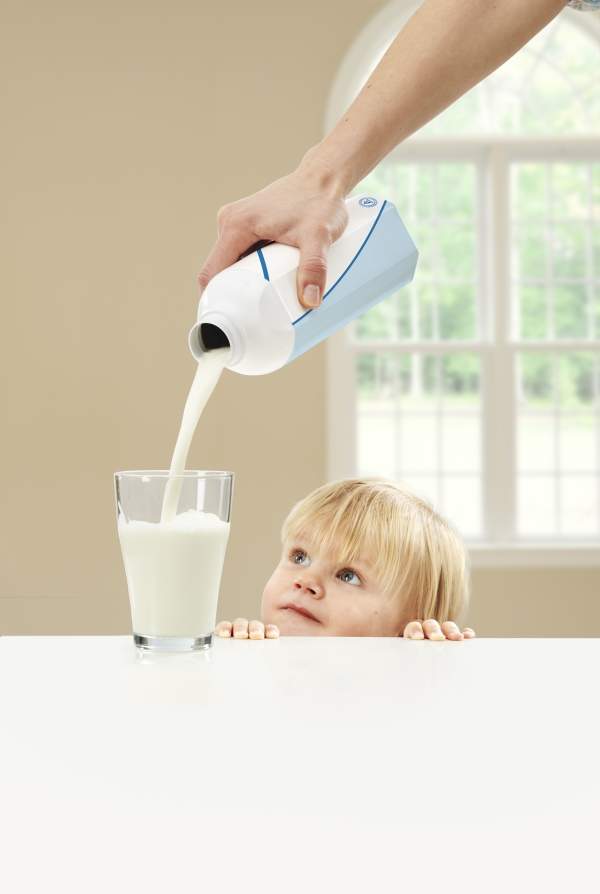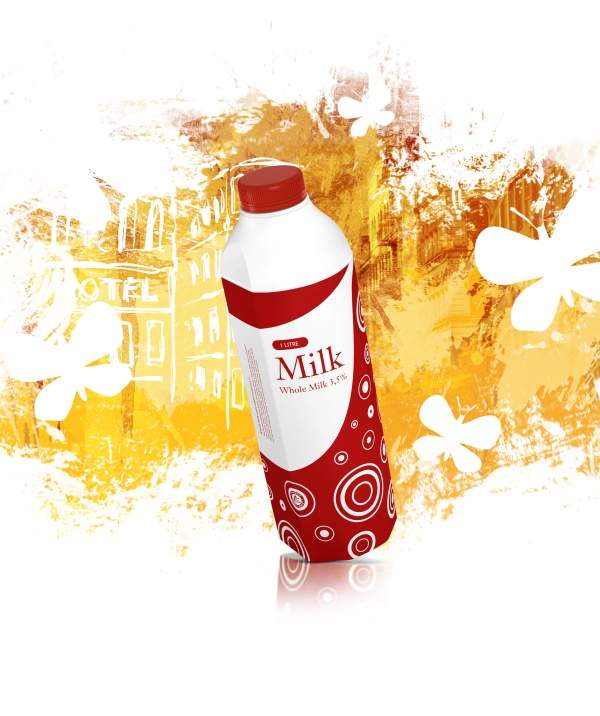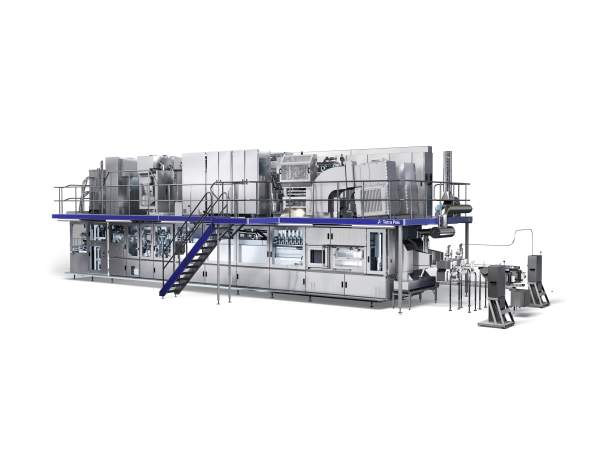Tetra Pak introduced the world’s first aseptic carton bottle for white milk in May 2011. Branded as Tetra Evero Aseptic, the bottle is currently available in a 1,000ml pack. It can store milk for up to six months.
The product combines the environmental advantages of a carton pack with the ease of handling and pouring that a typical bottle form offers. It is designed with space to print graphics and labels across the entire surface for consumer appeal. The carton bottles can be distributed on an open cardboard tray. A film-shrink with a handle can be used alternatively.
The bottle has been launched in Europe and will be launched in South America too.
Notable customers include Corporación Alimentaria Peñasanta (CAPSA), one of the largest dairies in Spain. CAPSA chose the Tetra Evero Aseptic for their project APOLO which sees an investment of €100m on a new range of functional milks over the next five years. CAPSA believes the new packaging form will benefit its product line to be easily distinguished over the shelf.
Germany-based dairy Weihenstephan also chose to test market the aseptic packaging of Tetra Pak in selected retail outlets.
Benefits of Tetra Pak’s aseptic milk carton
Tetra Evero Aseptic comes with one step opening for the first time in the world. The cylindrical bottle shape and flat side panels of Tetra Evero Aseptic make opening, holding and pouring easy.
Flat side panels of the cylindrical bottle enable a firm hold. Better pouring is enabled due to the ideal angle the shape provides when the carton bottle is being emptied. The safety of the pack is maintained with a two-step safety feature.
Being a unique model, the new packaging variety can potentially add high impact branding to value-added packaged milk sellers.
Moreover, customers can print graphics and labels across the entire surface of the package to achieve high consumer appeal. In addition, the product is environment friendly.
Made from renewable cardboard certified by the Forest Stewardship Council (FSC), the bottle is recyclable and has 24% to 30% lower CO2 footprint, according to a Life Cycle Assessment (LCA) conducted by an independent research.
Tetra Evero Aseptic bottle development
The development of the carton bottle was engineered by aligning the design and engineering, product development and supply chain development departments to form a cross-functional team.
By notifying the company’s requirements to suppliers well in advance, the packaging machine prototype was developed in 12 weeks against six months usually taken for such development. On-site field tests were conducted at customer facilities to validate the product’s performance in real life operating conditions.
Space was rented at the customer facilities to accommodate the machinery. Milk to be test packed was bought from the customers. The trials were successfully completed in six months.
The aseptic chamber was designed and tested using modelling and simulation techniques in fluid dynamics.
Packaging systems required to produce the world’s first aseptic carton
The carton bottle can be produced using the packaging line Tetra Pak A6 iLineTM which has a capacity of up to 10,000 packs an hour. The cost effective packaging line occupies half of the space, costs 30% lesser and consumes 50% lesser electricity than other aseptic bottling lines such as dry sterilisation MonoBloc. The higher efficiency of the line translates to a 25% saving in operating costs.
The development of the hot runner which injects the plastic into the outer mould of the machine was complex and challenging for Tetra Pak’s engineers as it required precise temperatures to ensure the seal did not leak due to low temperature nor did the moulded top deform due to higher temperature.
Technology
The Tetra Pak A6 iLineTM for Tetra Evero Aseptic was developed by achieving breakthroughs in injection moulding, aseptic sterilisation, distance filling and opening and closure technology. The company holds 14 design and application patents for the bottle and the Tetra Pak A6 iLineTM.
The top, carton sleeve and capped neck of the bottle are fused by using latest injection moulding techniques. The three to six seconds time taken for injection moulding has been reduced significantly to a little more than a second by simplifying the process.
The radical simplification was achieved by integrating the two-part injection mould into the filling machine and fixing the carton sleeve within the mould so the time lapse between moulding, fusing and sealing of the bottle components is minimised.
The distance filling technology incorporated in the machine allows filling of the sterile package without foaming.
Traditional carton materials come flat-packed, which means that they can be sterilised before forming the shape. Unlike them, the Tetra Evero Aseptic comes in a preformed shape, creating the need for a different type of aseptic chamber. Moreover, maintaining the condensed gas on the flatpack material surface within specific operational limits is a difficult process. Tetra Pak, therefore, adopted a technique called gas-phase sterilisation which requires preheating of the bottle to avoid condensation.
The bottle is sterilised in the aseptic chamber in a three step process. It is pre-heated in the first step to avoid condensation and treated with gaseous hydrogen peroxide in the second step to kill bacteria inside and out. In the third and final step, the bottle is ventilated with sterile air to eliminate the gas.
Future plans for Tetra Pak’s new bottle
The product is initially targeted at white milk market, including plain and enriched milk. It will be expanded to flavoured milk, cream and oxygen sensitive milk in near future.






